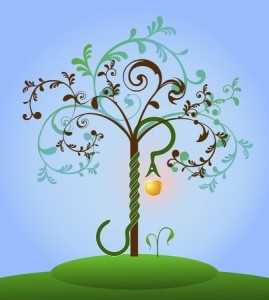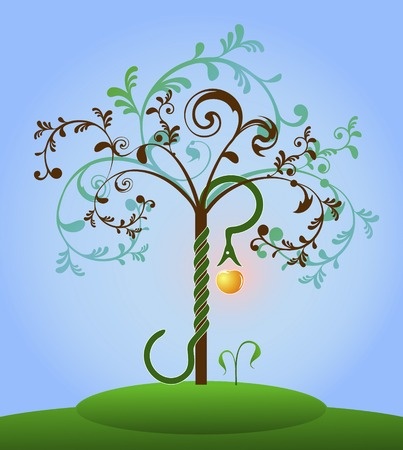
On August 3, 1948, Whittaker Chambers was called to testify before the House Un-American Activities Committee (HUAC). He gave the names of individuals he said were members of the Communist Party, including that of Alger Hiss. Chambers had himself been a Communist spy, but he became disillusioned during the Stalinist purges of the 1930s. He also reported a conversion to Christianity that led to his leaving the communist underground in 1938. By early 1948, Chambers had become one of the best known writer-editors for Time magazine.
Hiss was tried twice for perjury. He couldn’t be tried for espionage, because the evidence indicated the offense occurred more than ten years before that time and the statute of limitations for espionage was five years. The first trial ended with a deadlocked jury, eight to four for conviction. Chamber’s testimony was the primary evidence against Hiss. Hiss had an impressive array of character witnesses testify in his behalf, including two U.S. Supreme court justices, a former Democratic presidential nominee and a future Democratic presidential nominee, Adlai Stevenson.
Chambers was attacked by Hiss’s attorneys to discredit his testimony. They said he was: “an enemy of the Republic, a blasphemer of Christ, a disbeliever in God, with no respect for matrimony or motherhood.” At the second trail Hiss’s defense produced a psychiatrist who said Chambers was a psychopathic personality and a pathological liar. The second trial ended in January of 1950 with Hiss found guilty on both counts of perjury. He was sentenced to five years in prison, but only served three.
In 1952, Chambers published Witness, partly autobiographical, and partly a warning against the dangers of communism. It was a bestseller for more than a year and received wide acclaim. Ronald Reagan credited it as the inspiration behind his conversion from a New Deal Democrat to a conservative Republican. In 1984, then President Reagan posthumously awarded Chambers the Presidential Medal of Freedom.
Within Witness, Chambers said that Communism has a simple, rational faith that inspires men to live or die by it. This faith was humanity’s second oldest faith. Its promise was whispered during the first days of Creation under the Tree of the Knowledge of Good and Evil: “you will be like God.” This, he said, “is the great alternative faith of mankind.” Like all great faiths, its force is derived from a simple vision.
It is the vision of man’s mind displacing God as the creative intelligence of the world. It is the vision of man’s liberated mind, by the sole force of its rational intelligence, redirecting man’s destiny and reorganizing man’s life and the world.
Stripped of the rhetoric of the McCarthy era, Chambers does have a point. We can trace what he said here back to the thought of Ludwig Feuerbach, who wrote The Essence of Christianity in 1841. Feuerbach’s did have a significant influence on Karl Marx and his followers. Feuerbach argued against the existence of God, saying: “the mystery of theology is anthropology.” Man is the soul of God—“The Godhead of God is humanity.” Man has his highest being, his God, in himself. Not in himself as an individual, but in his essential nature.
If human nature is the highest nature to man, then practically also the highest and first law must be the love of man to man. Homo homini Deus est [man’s God is Man]—this is the great practical principle. This is the axis on which revolves the history of the world.
What Feuerbach wrote in 1841 and Chambers in 1952 is the heart of all sin and rebellion. In wanting to be wise, to know good and evil independent of the knowledge of God, humanity did make itself God. There is a wisdom that is “God’s sole preserve.” In his commentary on Genesis, Gordon Wenham said human beings should not aspire to attain it. “A full understanding of God, the universe, and man’s place in it is ultimately beyond human comprehension. To pursue it without reference to revelation is to assert human autonomy and to neglect the fear of the Lord, which is the beginning of knowledge (Proverbs 1:7).”
The tree of the knowledge of good and evil is only referred to by that name in Genesis 2:9 and 2:17. Genesis 2:9 contains the description of both the tree of life and the tree of good and evil being placed in the middle of the garden of Eden. In 2:17, the command that Adam should not eat from the fruit of the tree of the knowledge of good and evil “for in the day you eat of it you shall surely die” is given. In Genesis 3:6, it is referred to as a tree “to be desired to make one wise.”
Agreeing with Wenham, Kenneth Matthews said that the tree of the knowledge of good and evil was referring to a divine wisdom. He observed how several scholars have pointed out that features of the garden story in Genesis bear a strong resemblance to wisdom literature. The Wisdom tradition says that wisdom is possessed by God (Proverbs 2:6; 8:22); that it is something everyone should seek to attain (Proverbs 3:13; 8:10-11). Furthermore, it should be achieved through the “fear of the Lord” and by not by grasping for it independent of God (Psalm 111:10; Proverbs 2:1–6; 3:5–6; 9:10; 11:7, 29; 15:33; Isaiah 11:2).
By obtaining it through disobedience, the first couple expressed their independence of God and obtained wisdom possessed by God (3:5, 22) through moral autonomy. This autonomous action meant death because this wisdom was obtained unlawfully; transgression against the law of God carried the penalty of death.
When the garden setting is compared against the Mosaic tradition, there are several similarities. Commentators have pointed out where the two trees in the garden are comparable to the elements in the tabernacle that represent life and the law of God. The candlestick is shaped like a tree with its branches symbolizing life, while it gives light to the twelve loaves of bread representing God’s provision for Israel. The commands or “laws” of God is exemplified by the stone tablets in the ark of the covenant. “The God of the tabernacle was indeed the God of the garden.” Following the same line of thought as Matthews, Wenham said:
In the garden, the revealed law of God amounted to the warning “Do not eat this tree” on pain of death. In later Israel, many more laws were known, and those who flouted them incurred the divine curse and risked death. Since the law was God-given, it could not be altered or added to by man (Deut 4:2); thus human moral autonomy was ruled out (Josh 4:7). In preferring human wisdom to divine law, Adam and Eve found death, not life. In the tabernacle, the inviolability of the law was symbolized by storing the tables of the law inside the ark itself, the sacred throne of God, guarded and out of sight in the innermost holy of holies, for to see or to touch the ark brought death (Exodus 40:20; Numbers 4:15, 20.)
The heart of the Fall in the garden was to believe that homo homini Deus est, man’s God is Man. Chambers may not have been correct about Hiss, who continued to fight for and claim his innocence long after he was released from prison. But he was correct about the second oldest religion as one where man’s mind displaces God as the creative intelligence of the world. “It is the vision of man’s liberated mind, by the sole force of its rational intelligence, redirecting man’s destiny and reorganizing man’s life and the world.” Not communism, as Chambers said, but humanism, as Feuerbach said. Man’s God is Man.





